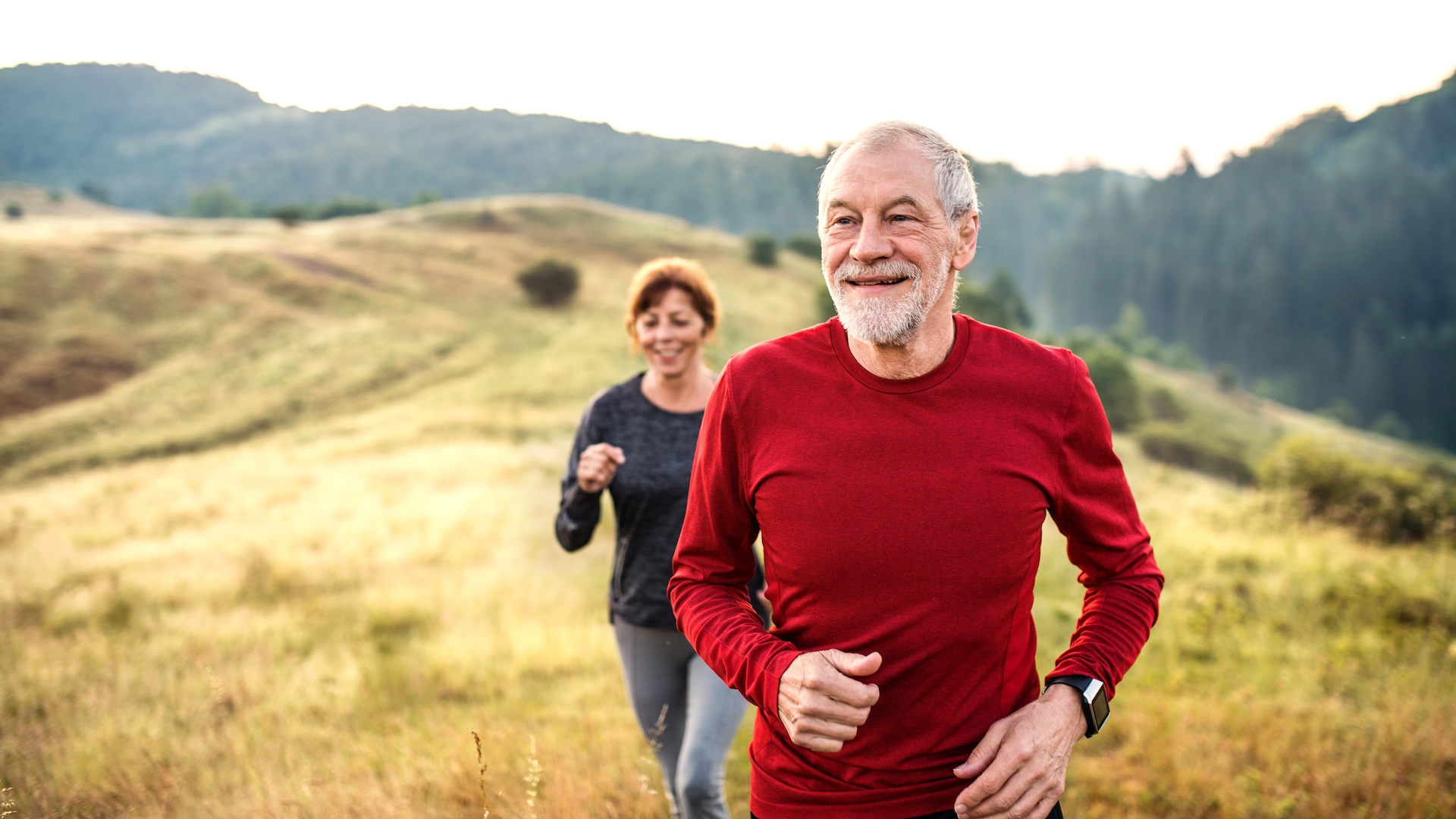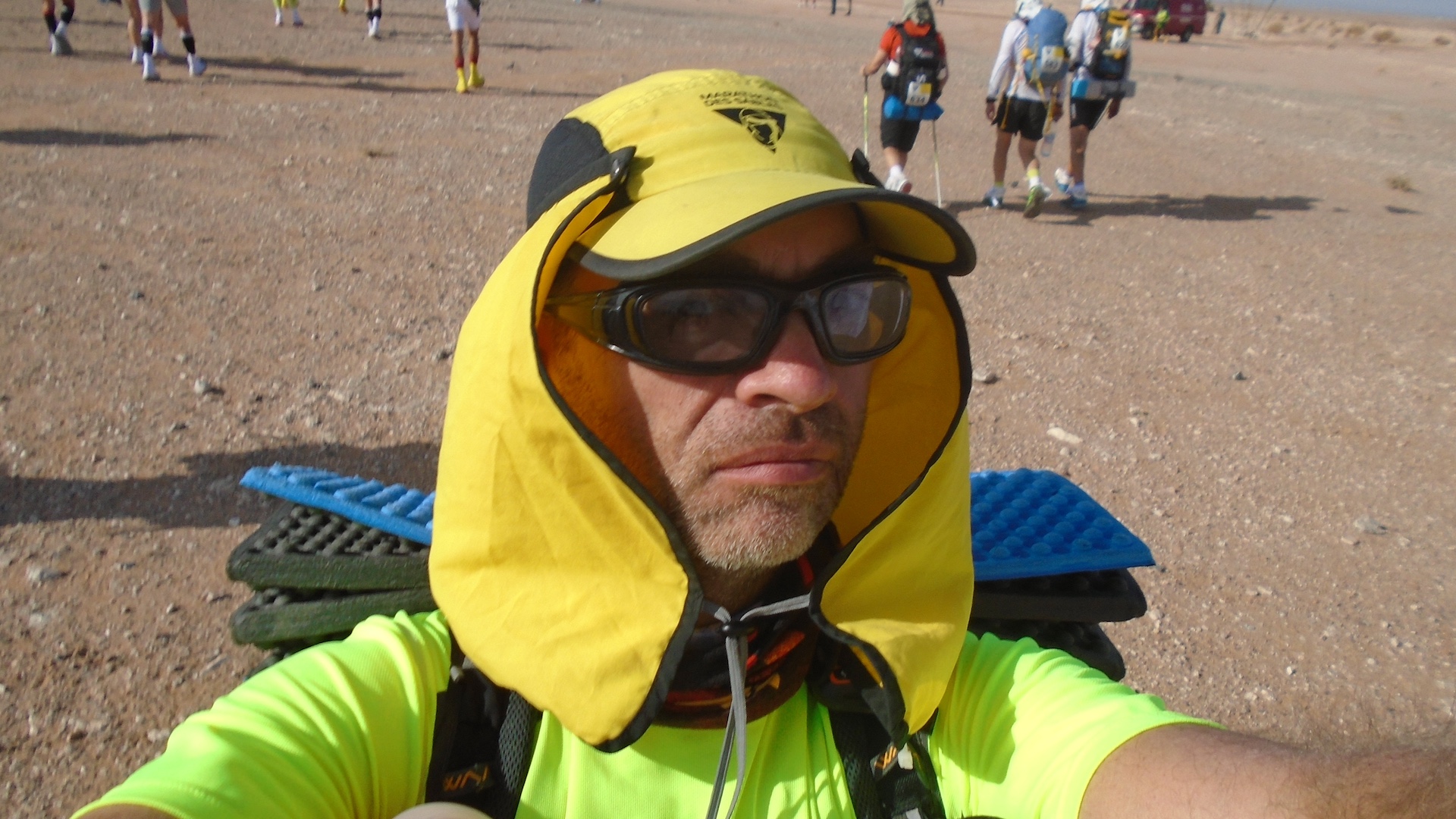
Trail running is surging in popularity and its offer of scenic, traffic-free settings and joint-friendly terrain compared to road running is fuelling the sport’s rise among older outdoor enthusiasts.
According to data from RunRepeat in partnership with World Athletics, trail running participation has increased by 231% over the past decade, and the average age of trail runners has reached an all-time high of 39.5 years.
“I didn’t take up running until I was 48,” explains Robert Duncombe, a pharmacist from Chelmsford, Essex. “Before that, I’d never run a race or attended a parkrun. In 2016, I decided it was time to change that.”
Working as a chief pharmacist at the Christie Cancer Hospital in Manchester, Duncombe decided to apply for a charity place in the London Marathon through Cancer Research. “I secured a spot and that marked the beginning of my journey,” he says.

By 2019 that journey had taken him across the Sahara Desert on the multi-day ultra that is the Marathon des Sables. “That opened the door to a new world of trail marathons and ultra marathons. I’ve since done events like Race to the Stones multiple times, as well as ultras in Costa Rica, Tanzania and Jordan. This year, I tackled the BTU Jungle Ultra in Peru.”
Taking up or returning to running in later life doesn’t necessarily mean you’re playing catch-up in the health stakes either. Studies suggest that competitive athletes in their 60s, 70s, 80s and even 90s tend to have more and healthier muscle mass, stronger hearts and much less body fat than non-athletes of the same age.
Older athletes also were found to have fewer long-term health conditions than aging non-athletes – taking fewer medications and requiring fewer hospital or GP visits too. In short, it’s never too late to start and reap the rewards of trail running. Especially when gear, such as the most comfortable trail running shoes, has been developed to be more supportive and impact-absorbing than ever.
Little strides

Alison Little, from Braunton, Devon, started running seriously in 2010, aged 43. “But it was not until 2013 that I did my first long distance ultra run of 50 miles. I also did my first multi-day that year, which was the Ridge Way in three days 134km with XNRG.
“My motivation was being with other like-minded runners. I also discovered I was very competitive. I didn’t win races outright but I always did well in my age group, which was my challenge.”
Little has since completed 112 marathons and ultras around the world with varying terrain and levels of difficulty. “I think as a wife and mother taking up running later in life made me feel less guilty. I would worry about getting back for the kids, not going away every weekend – but now they have all left home, I have this sense of freedom now.”
Advnture Newsletter
All the latest inspiration, tips and guides to help you plan your next Advnture!
Duncombe, now 56, calls himself both a road and trail runner. “But trails and ultras hold a special appeal,” he insists, adding has some sound advice for those taking up running or returning to it later in life.
“Setting yourself a target – in my case the London Marathon – is a great way to focus your training and motivate yourself to stick at it, even on the tough days. I followed a marathon prep plan and got into the rhythm of running two or three times a week – and incorporating parkrun was a revelation too. I soon found out that not only was running a great stress reliever, but I discovered I wasn’t too bad at it either.
“Since 2016 I have run approaching 50 marathons or further. I think 25 of them have been longer than marathon distance. I have entered and completed six multi-day ultras, as well as a couple of 100 milers.”
Running the risks


Core work: Planks, bridges and Russian twists improve balance and stability, crucial for uneven trails.
Leg strength: Squats, lunges and step ups strengthen the muscles used in climbing and descending.
Balance exercises: Single-leg exercises or using a balance board can help with agility on uneven terrain.
The easy availability of routes via apps like Strava – along with social media and online communities – are helping to increase the visibility and accessibility of trail running. It’s inspiring a broader demographic to connect with the greater outdoors – and get a decent workout in the process.
While health professionals actively encourage us to keep fit and take up exercise if we don’t workout already, as we get older this does come with some caveats. Having a health check before embarking on a marathon mission is a sound move.
“You need to put more focus on injury prevention,” suggests Jon Shield, ultra marathon runner and running coach. “Some factors to consider include sarcopenia – loss of muscle mass – as we age. This can start in your 30s, losing up to 8% of your muscle mass per decade, with this accelerating after the age of 60.
“We also become more prone to falls – increasing our risk of injury – but it’s not all doom and gloom,” insists Shield. “Just think ‘use it or lose it’ – the more you train your muscles the less muscle you lose as you age. Also, your heart age can differ to your actual age. Someone could be 55 years of age but have a ‘heart age’ of 40 – if they’ve had a decent diet, kept active and have no genetic issues.”
A strong start

As a late-comer to trail running, Robert Duncombe insists setting a goal is crucial. “Whether it’s a marathon, an ultra, or even just a 5k, having an event on the horizon makes all the difference. Consistency is key.”
It’s a philosophy Jon Shield echoes. “Set realistic goals as motivation and yes, join a running club – running on the trails in a group is safer and it becomes another social circle that can keep you accountable,” adds Shield.
Dr Nicky Keay, a sports and dance endocrinologist, advises mature female athletes on combatting the pitfalls that can come with taking to the trails later in life.
“Your training should focus on quality not quantity – including strength training – along with ample recovery adequate amount of fuel for each session.”
Keay advises women experiencing the menopause to keep training and increase their intake of protein to support their exercise. “Fuel for the work required – that means no fasted training.”
Also, if time allows, look to incorporate low-impact cardio sessions including cycling, swimming and or rowing to build overall stamina and cardiovascular endurance – with less strain on the joints while complementing trail running muscles.
“I have naturally slowed down but I have embraced that by choosing only races that are off road, which for me is less testing on my body,” explains Alison Little, now 57. “I prefer multi-day races as this is about stamina not just running ability.”
Alison Little’s advice for anyone starting running later in life is start steady. “Ignore the racing snakes at the front because they are probably 30 years younger than you – just enjoy and think how lucky you are that you can go for a run.”
Plan ahead

“Have a clear plan too,” advises Jon Shield. “Hire a qualified running coach with experience who can make training enjoyable and progressive, minimizing the risk of injury – and be sure to run in daylight initially. Trail running becomes a lot more difficult using a head torch as we lose depth perception in the dark.”
A running coach can design an individualized plan based on your fitness history, goals and limitations. This may include a baseline assessment, a gradual mileage buildup – eg, increasing mileage by no more than 10% per week – run-walk intervals and flexible scheduling to allow more rest days or active recovery sessions to accommodate slower recovery times.
“Cross training has also been invaluable to me,” adds Robert Duncombe. “I hit the gym regularly for weight training and core work, which helps prevent injuries and supports my running fitness.”
“Starting running in my late 40s came with its challenges,” adds Duncombe. “Time management was tricky with a demanding job, but I made running a priority. My philosophy is simple: run at a pace and distance that allows me to run again tomorrow. I’m not out to win races – I run because I enjoy it and want to keep doing it.”
Rob Kemp is a Dorset-based trail runner and off-road cyclist. He's written on the subject of health and fitness for over 25 years across a range of publications and websites. A former contributor to Trail Running and Outdoor Fitness magazines, his work now regularly features in The Telegraph and Cycling Weekly magazine. These days he's easing off from marathon running and devoting more time to hiking in Wales and Scotland or falling off of his bike in scenic wilds of south-west England.

